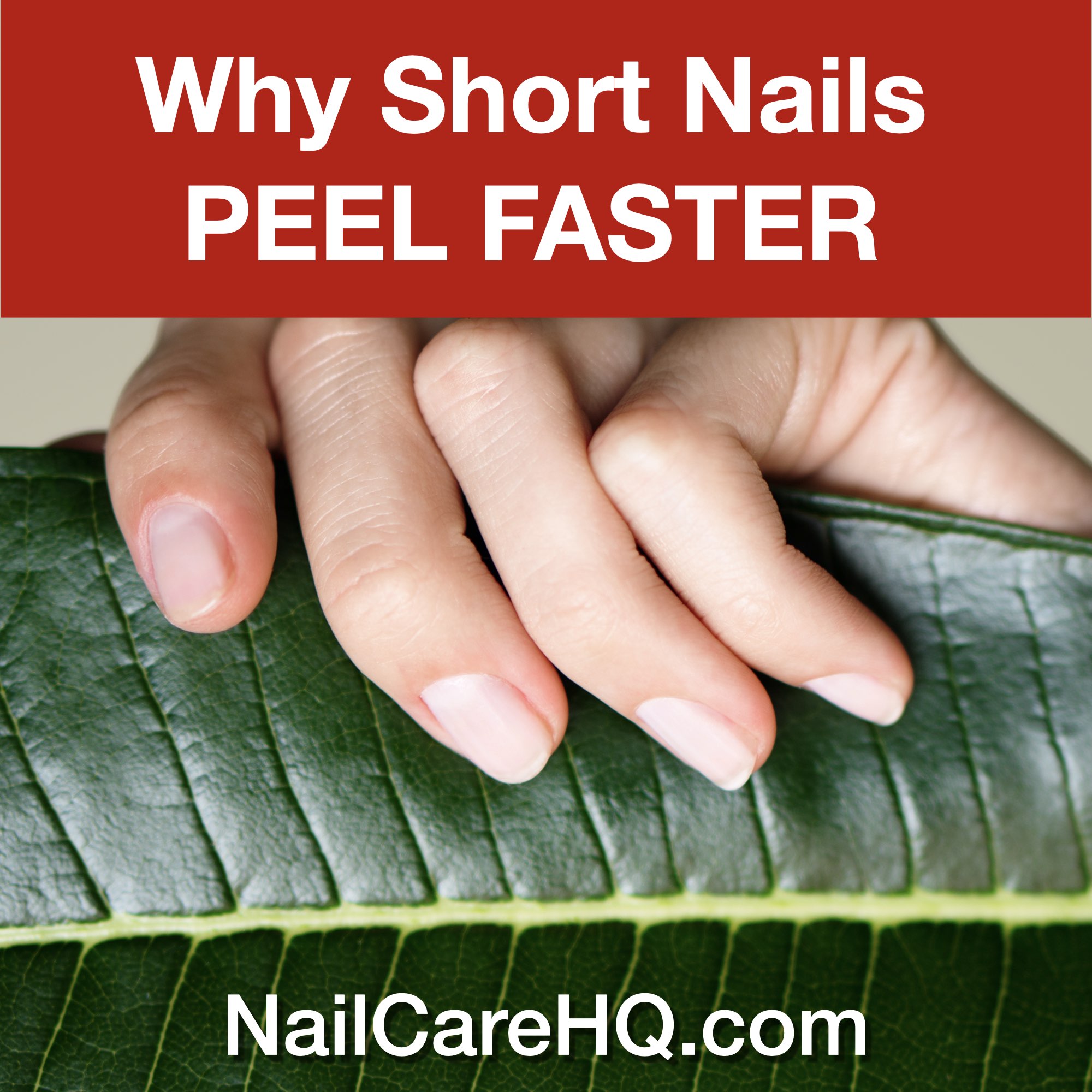Over the last decade working with thousands of people struggling to grow their nails longer, I have learned the top 3 reasons why short nails peel more than longer nails.
You’ll find all kinds of reasons on websites around the internet. I find that a lot of them are inaccurate and leave you with the feeling that something might be horribly wrong with your health.
The TRUTH is that for most of us, simply living life does the most damage to our nails.
When it comes to nails, there are three types of people.
- People with zero length and they’d like them to grow longer.
- People with 3mm+ of length and want them to stay that way.
- People who just don’t care.
If you’re reading this, it’s safe to assume that you are in one of the first two categories.
#1 Tip Wear
The main cause can be summed up in two words—tip wear.
We use our hands all day long. No, really. All—day—long.
Watch yourself as you go through your day. When are your hands doing absolutely nothing?
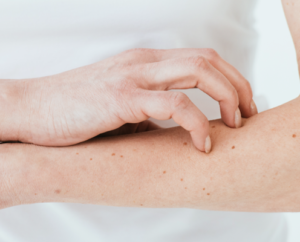
Why is tip wear a big problem for those with shorter nails?
People with short nails use their hands differently from those with longer nails.
They can grab, touch, poke, scratch, etc. with the very tips of their fingers.
My husband’s nails are very short and the skin at the very tips of his fingers has toughened with use.
The advantage is that he has precise control when he touches different screen locations on his phone. I can actually hear his fingertip skin clicking on the screen!
My nail tips range from 3mm to 10mm depending on my laziness at trimming them. The skin on my fingertips rarely touches anything.
As a result, on the rare occasion that I have a deep break, my fingertip is overly sensitive.
It can be painful to touch things for a few days until the skin gets tougher.
Once the nail free-edge grows to about 3mm, we start to adapt how we use our hands to accommodate for our nails “being in the way.”
Leave a Trail
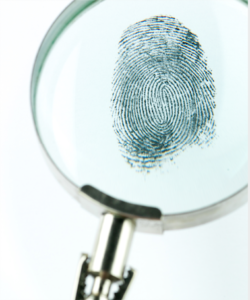
I physically CAN’T pick things up with my fingertips.
I use the pads of my fingers. Basically, I leave my fingerprints everywhere!
As a result, my fingernails don’t touch everything.
Here’s where we get back to the problem with tip wear.
The free edge of shorter nails takes a lot more abuse. They get rubbed and beaten more.
Like a Book
Although this isn’t an exact analogy, pretend your nail layers are like the pages of a book.

When the pages are new, they are flat and lay nicely together. Now imagine if you kept fiddling with the edges. You fan the pages repeatedly. Maybe you accidentally drop it in the bathtub and then rush to dry it out in the sauna. Now the pages are warped and curling. You try to smooth out the edges but that just seems to make them worse. You notice that some of the pages are starting to tear. But you need to keep reading the book. It slides off your lap and crashes to the floor. You pick it up and try smoothing the pages again, but doing so causes some of the pages to rip out of the binding.
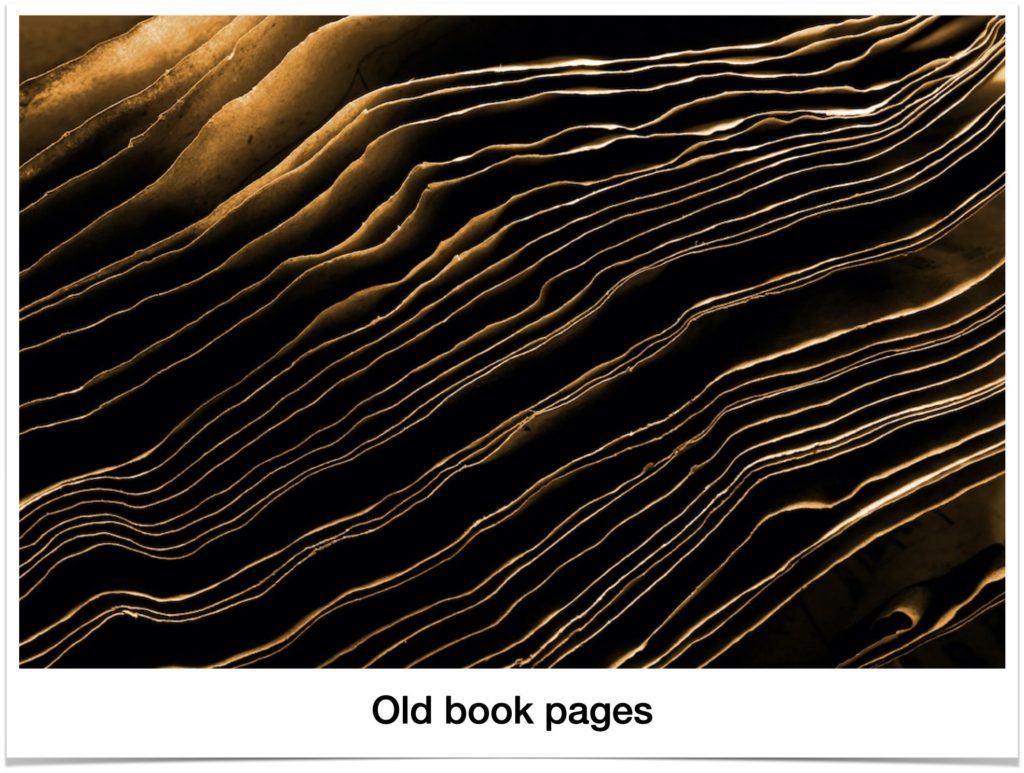
Our fingernails can take much more abuse than this poor little book. But they aren’t indestructible.
We scratch places that itch, oftentimes through fabric. We grab, dig, push, pry, poke, and so much more. Our hands and nails take a lot of abuse.
This abuse can cause the layers at our tips to splay out and start to peel.
#2 Water Damage
Although our nails are about 50 layers of a tough, fibrous protein called keratin, they have a major weakness—water. Think of it as Superman’s weakness to kryptonite.
Refer to the picture below. Water can travel around AND through all of the tiny holes in every nail cell.
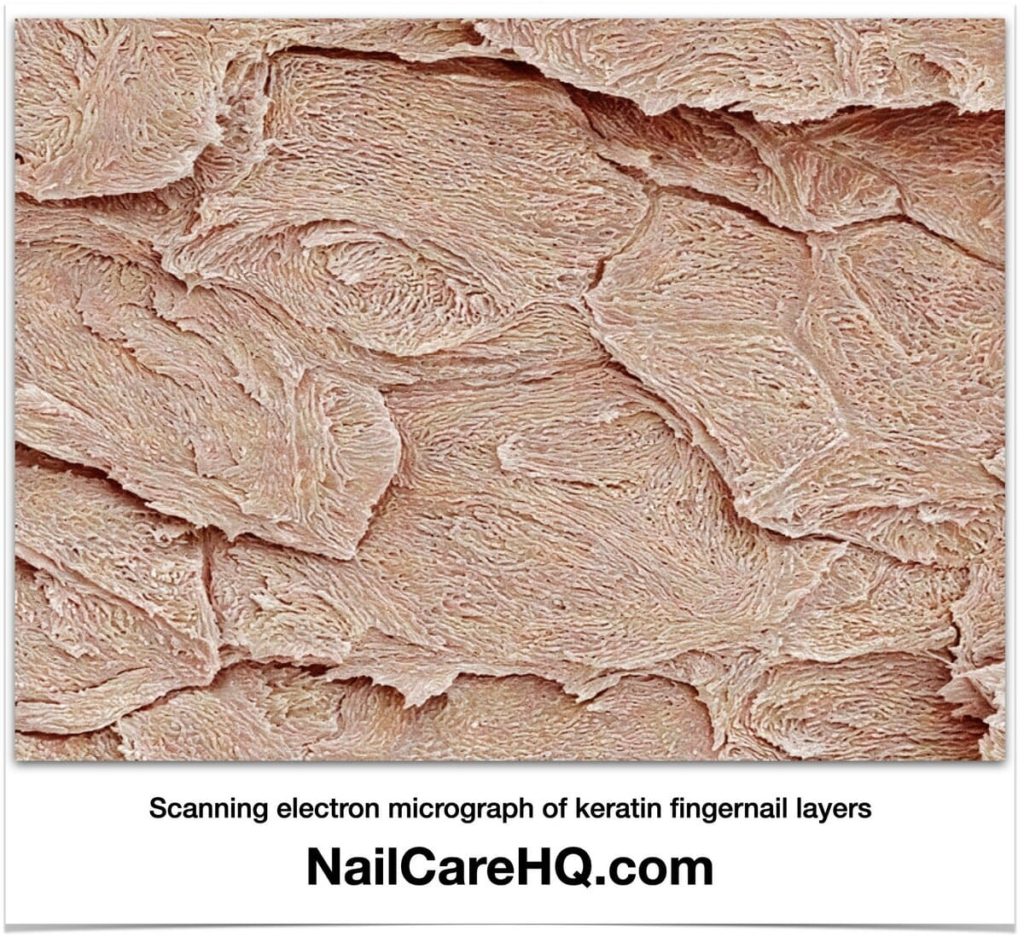
Our nails have the ability to absorb 1/3rd of their weight in water in a matter of minutes. That doesn’t sound like much, right?
Now imagine what would happen to you if you absorbed 1/3rd of your weight in water that quickly. You’d be pretty puffed up, soft, and squishy. The same effect happens to our nails.
It takes one to two hours for that water to evaporate out of our nail tips.
But our nails need a small amount of moisture and body oil to remain flexible enough to bend when we bang them into things.
The repetitive cycle of exposure to water with evaporative drying causes our nails to become too hard and brittle.
People with short nails usually aren’t doing the techniques that help decrease nail peeling and breaks.
#3 Stress Fractures
The official label for damage from the nail tip bending repetitively is transverse fissures. I call them stress fractures because it’s a little easier to remember.
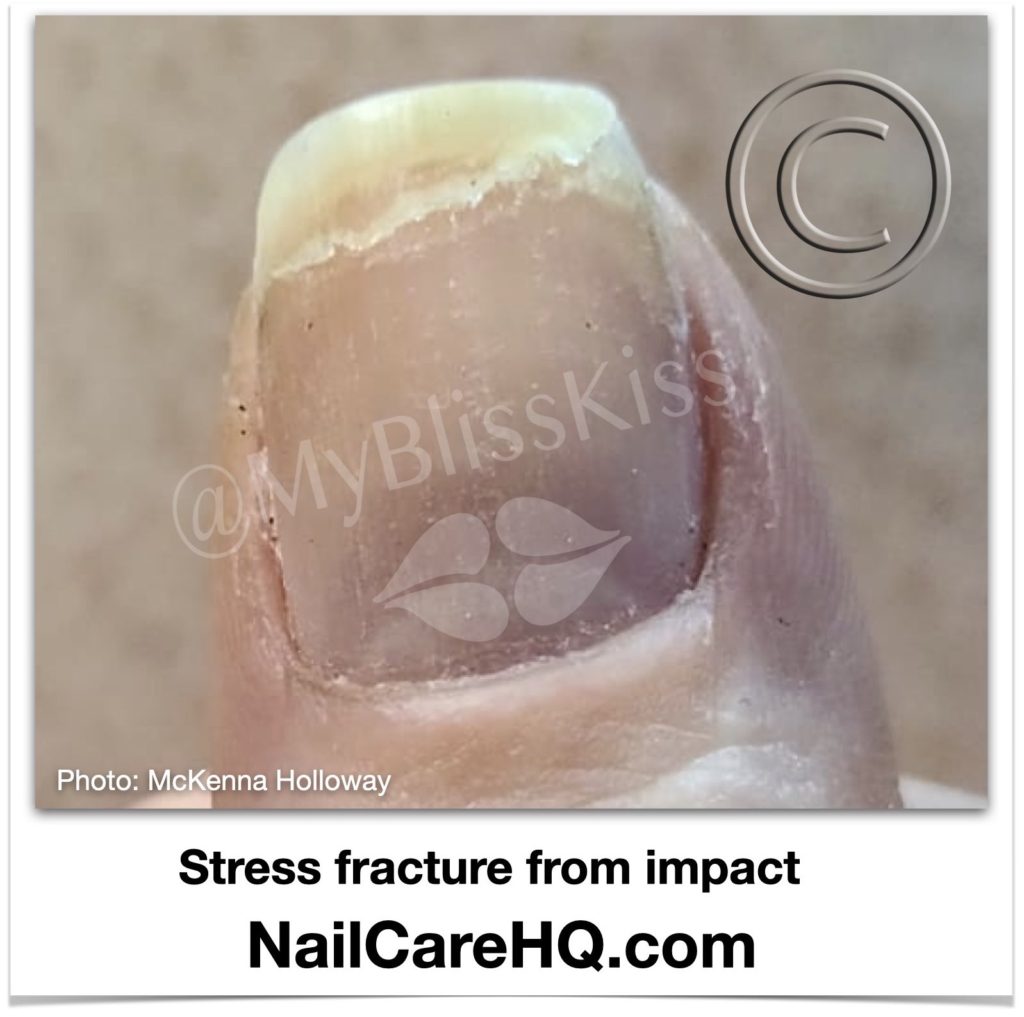
Nail layers are a hodge-podge of interlinking cells as you can see in the photo above.
If you have short nails and you’re wanting to grow them longer, the 0 to 3mm time period is a “danger zone” phase of growth.
Why?
Because you haven’t started to change your behavior when using your hands.
You don’t have nail tips forcing you to change the way you navigate through life.
As a result, you’re going along using your hands the way you always do.
The problem is that these short nail tips keep bumping into EVERYTHING.
Your tips are continually getting bent and you probably don’t even notice.
People with thicker nails don’t tend to have issues with short nail tips bending and fracturing.
But if your nails are naturally thin and weak, like mine, then excessive bending is a big problem.
Although there are many techniques and practices to successfully growing your nails longer—ie: breaking them less—there are three main ways that will really help;
- Intensive hydration treatments with a high quality, jojoba wax ester-based nail oil
- Short term use of nail strengtheners
- Learning how to use your hands differently.
Let’s look at these a little closer.
Nail Oil
Water pushes our nail layers apart and nail oil can help “glue” them together. When all the little gaps around the nail cells are filled with oil, water can’t get in.
I explain the importance of nail oil to naturally strengthen nails in far more detail in another article.
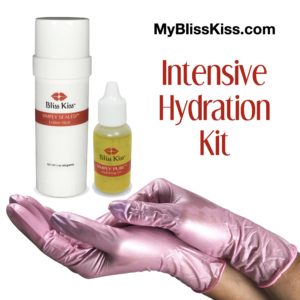
The fastest way to get oil into your nail tips is to warm up the oil. This can be done in two ways; warm the oil in a bowl, or wear nitrile gloves to help contain your body heat thus warming the oil.
I don’t like the first option because it uses a lot of oil, it can be wasteful, and you are stuck with your hands in a bowl of oil for quite a while.
The second option uses 1 drop of nail oil under each nail which will also wick around to the top. Because you are wearing nitrile gloves, you can continue going about your daily tasks and even use your phone.
Click here for the full directions to the Intensive Hydration Treatment
Nail Strengtheners
I have learned that the danger zone is one period in time where nail strengtheners can be really helpful.
Strengtheners have ingredients that hold your nail layers together giving them better temporary strength than traditional polish.
Many people think I am against nail strengtheners, but this is not true.
I have a problem with the marketing claims. I discuss this in greater detail in my Nail Strengtheners article.
The keyword to remember is “temporary”.
These strengtheners don’t do anything to change the actual structure and makeup of your nail plates.
As soon as you remove the product, your nails are the same as before applying the nail strengthener.
But they can still be helpful in reducing peeling.

Nail strengtheners work in a similar way that an ankle brace provides support.
You still have the mobility of your foot and ankle, but it’s held more securely so you don’t hurt yourself again while walking. The brace doesn’t repair the ankle. It just provides support.
It is also important to remember that once your tips have reached 2-3mm, you no longer need the strengthener.
They can actually cause your nails to be too hard. They won’t bend on impact with a hard surface or object.
At this point, it’s best to shift to using 5 layers of polish using my Fab 5 Wrap Technique.
Use Your Hands Differently
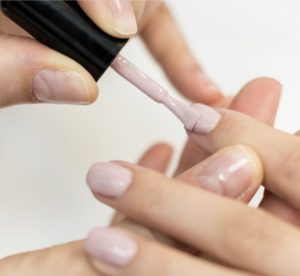
Pretend you’re wearing wet nail polish all the time.
It’s really quite simple. But I’ll be honest—it’s not easy.
You have to pretend you have longer nails in order to minimize the breakage and peeling while they are in this short phase.
It is when you have learned how to minimize the breaks and peeling that your nails will be able to grow past the “danger zone.”
In Conclusion
“If you always do what you’ve always done, you always get what you’ve always gotten.” ~ Jessie Potter
If longer nails are important to you, you’ll simply want to change the way you do things.

You’re learning new practices.
Incorporating new ways to improve your personal care takes thought and patience.
It can take a little time. Just know that the results will be worth the hard work.
